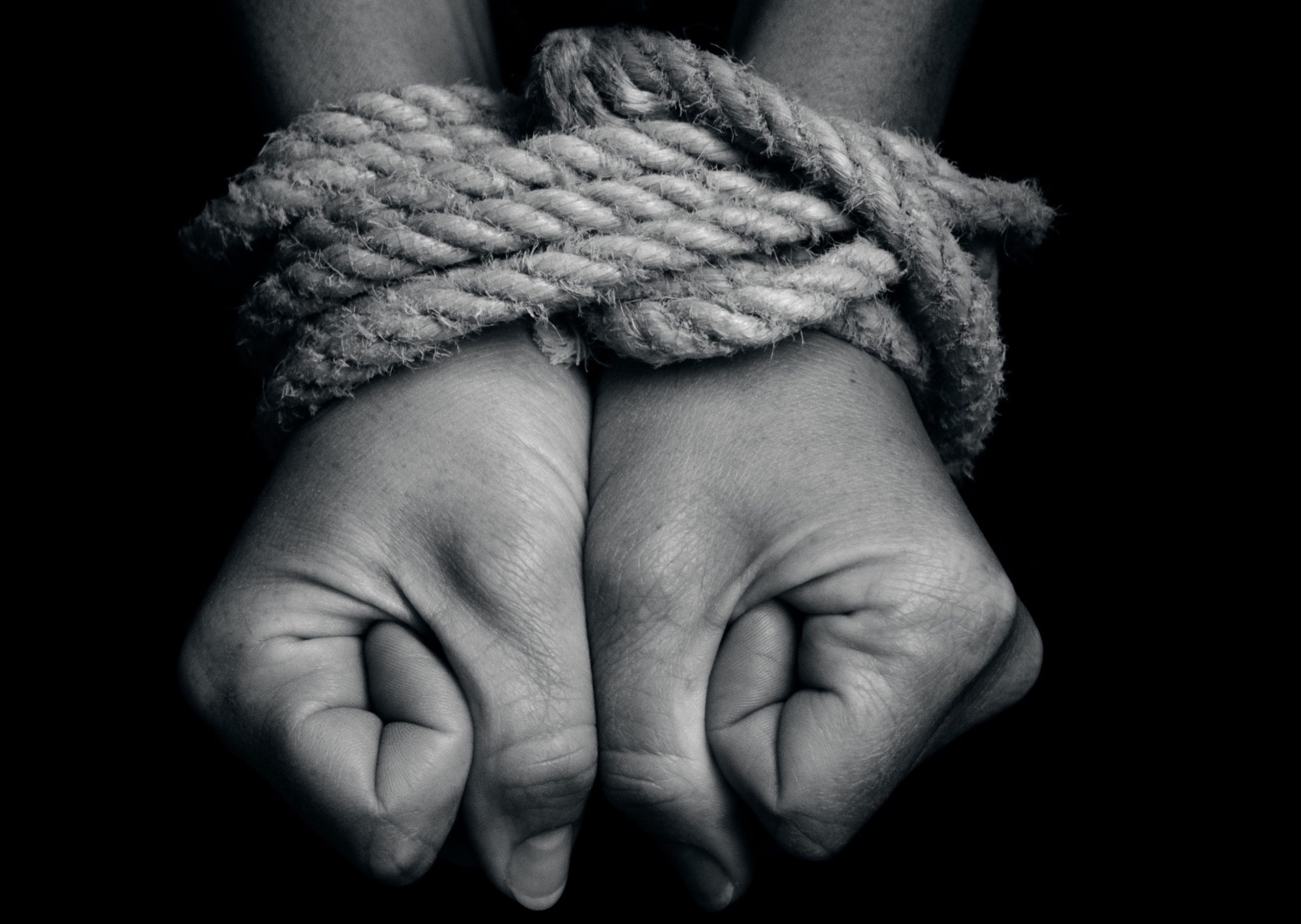In Canada, human trafficking often takes place in large urban centres, and also occurs in smaller cities and communities, largely for the purpose of sexual exploitation. We know that men, women and children fall victim to this crime, although women represent the majority of victims in Canada to date. More generally, those who are likely to be at-risk include persons who are socially or economically disadvantaged, such as some Aboriginal women, youth and children, migrants and new immigrants, teenaged runaways, children who are in protection, as well as girls and women, who may be lured to large urban centres or who move or migrate there voluntarily. Young women are sometimes recruited by younger male members of street gangs who use the promise of affection as a tool to recruit them.
As part of the Government‘s efforts, the Royal Canadian Mounted Police conducted Canada’s first Human Trafficking Threat Assessment, which reviewed cases and intelligence between 2005 and 2009 to determine the extent of this crime in 2010(3). The Threat Assessment confirmed that vulnerable, economically challenged and socially dislocated sectors of the Canadian population represent a potential pool of trafficking victims. It noted that non-Canadian victims are often brought to Canada from countries in Asia, notably Thailand, Cambodia, Malaysia and Vietnam, as well as countries in Eastern Europe.
More recently, increased evidence of human trafficking for forced labour has come to light. Investigations of such cases have occurred across the country with charges being laid in Alberta, Ontario and British Columbia. Cases encountered to date suggest that human trafficking for forced labour is more prevalent in Alberta and Ontario. Labour-related intelligence and investigations have involved foreign nationals, both male and female, from the Philippines, India, Poland, China, Ethiopia, Mexico, Thailand and Hungary. In addition, there are indications that some foreign nationals are illegally transported and subsequently exploited by the employers as domestic servants.
Obtaining cooperation from foreign victims has been particularly challenging for law enforcement. Foreign victims who were trafficked are usually in the country alone, without family or a support system, and may be obstructed by language barriers. Also, they may not always see themselves as victims of human trafficking. In most cases, they are skeptical of police and see very little value or nothing to gain from cooperating with police.
The Threat Assessment reports that investigations and intelligence have identified both men and women migrant workers as a vulnerable group for forced labour. Investigations into claims of labour exploitation have centred on the treatment of migrant workers, and in some cases, the fraudulent use of the Temporary Foreign Worker Program by third parties.
“We were treated like dogs on a short leash… To this day I don’t go out after dark because of all the threats. I have also received threats against my mother in Hungary”.
– VICTIM IMPACT STATEMENT (HAMILTON FORCED LABOUR CASE)
This Threat Assessment was the first significant overview identifying trends in Canada, providing strategic guidance for enforcement efforts. It has also guided government action by strengthening policies and programs to: better prevent and combat trafficking, address the needs of victims, and target traffickers. The Royal Canadian Mounted Police conducts threat assessments on this crime on an ongoing basis.

What is Human Trafficking?
Human trafficking involves the recruitment, transportation, harbouring and/ or exercising control, direction or influence over the movements of a person in order to exploit that person, typically through sexual exploitation or forced labour. It is often described as a modern form of slavery.
Human trafficking is often confused with human smuggling, so what are the differences?
Consent: The smuggling of migrants, while often undertaken in dangerous or degrading conditions, involves migrants who have consented to the smuggling. Trafficking victims, on the other hand, have either never consented or, if they initially consented, that consent has been rendered meaningless by the coercive, deceptive or abusive actions of the traffickers.
Exploitation: Smuggling ends with the migrants’ arrival at their destination, whereas trafficking involves the ongoing exploitation of the victim.
Transnationality: Smuggling is always transnational, whereas trafficking may not be. Trafficking can occur regardless of whether victims are taken to another State or only moved from one place to another within the same State.
United Nations Office of Drugs and Crime
Organized criminal networks, as well as individuals, perpetrate this crime, operating within Canada’s borders and internationally. Traffickers reap large profits while robbing victims of their freedom, dignity and human potential at great cost to the individual and society at large. Traffickers control their victims in various ways such as taking away their identity documents and passports, sexual abuse, threats, intimidation, physical violence, and isolation.
Victims suffer physical or emotional abuse and often live and work in horrific conditions. They may also face fatal consequences if they attempt to escape. This crime represents a consistent and pervasive assault on the fundamental human rights of its victims.
He told her that he had control over her, that she belonged to him and that he could do anything he wanted to her. He became more and more abusive with her, both physically and verbally. He threatened to kill her and told her that, if she reported him to the police, he could easily hire someone to kill her for a couple of rocks of crack. He told her that if she fled, he would end up finding her and that he would stab her [translation].
Excerpt from the decision of the court in R v. Urizar, Court of Québec, Criminal Division
While it is impossible to truly know the full scope and impact of this problem at the international or Canadian level, we do know that women and children are the primary victims -overwhelmingly so for sexual exploitation but also for forced labour – however, men are not immune to this crime.
The extent of human trafficking, either in Canada or internationally, is difficult to assess due to the hidden nature of these offences, the reluctance of victims and witnesses to come forward to law enforcement and the difficulty of identifying victims in practice. Moreover, these cases often go unnoticed and unreported due to manipulation, fear, threats from traffickers, shame, language barriers or mistrust of authorities.
The Canadian Centre to End Human Trafficking (CCTEHT), a non-government organization, launched the Canadian Human Trafficking Hotline on May 29, 2019. A first of its kind in Canada, the hotline is a multi-lingual and confidential service that is operational 24/7, 365 days a year. It connects victims and survivors of human trafficking to law enforcement, emergency shelters, transition housing, long-term supports, counselors, and a range of other trauma-informed services. Services are offered in more than 200 languages and are accessible to the deaf, hard-of-hearing and non-verbal.
Visit the Canadian Human Trafficking Hotline website to access a national directory of social services, education/awareness materials, as well as reports and research products.
If you or someone you know may be a victim, call Canada’s national human trafficking hotline at 1-833-900-1010.
Why do victims not come forward?
Victims May:
- Fear for their own lives;
- Not understand that they are victims of human trafficking;
- Be taught to distrust outsiders, especially law enforcement and other government authorities; Foreign victims may be afraid they will be detained and deported, or they may have limited language skills;
- Be completely unaware of their rights or may have been intentionally misinformed about their rights in Canada;
- Fear for their families and/or loved ones;
- Feel threatened that traffickers will harm their families if they report their situation to, or cooperate with, law enforcement.
A set of interrelated “push” and “pull” factors contribute to human trafficking. “Push” factors include extreme poverty, unemployment, lack of education, inadequate social programs, gender-based inequality, corruption, war and conflict situations, and political unrest in countries of origin. “Pull” factors include the perceived financial rewards of cheap, exploitative labour practices in some economic sectors. Victims may also be ‘pulled’ into trafficking through the promise of money and what is portrayed as or believed to be a better life.
Human trafficking is often characterized as a “low risk/high reward activity” because of the fact that the crime is clandestine, therefore difficult to detect and investigate, which contributes to the relatively low prosecution rates worldwide. Victims can be exploited over and over for the financial or material benefit of the traffickers making this crime lucrative. The United Nations (UN) has estimated that this illegal activity generates approximately $32 billion2 (US) annually for its perpetrators.
The United Nations, including the General Assembly (UNGA), Security Council (UNSC), Human Rights Council (UNHRC), and the Office on Drugs and Crime (UNODC) regularly contribute to the global research, prevention and protection landscape on human trafficking. Canada strongly supports anti-human trafficking activities in these various fora and offices, as well as those which are specifically dedicated to the fight against trafficking including the work of the UN Special Rapporteur on Trafficking in Persons, especially Women and Children.
Canada’s Criminal Law Responses
The Criminal Code of Canada (Criminal Code) contains the tools to hold traffickers accountable and includes four specific indictable offences to address human trafficking, namely sections 279.01 (Trafficking in persons), 279.011 (Trafficking of a person under the age of eighteen years), 279.02 (Material benefit), and 279.03 (Withholding or destroying documents).
Many other Criminal Code offences can also apply to human trafficking cases including kidnapping, forcible confinement, uttering threats, extortion, assault, sexual assault, prostitution-related offences, and criminal organization offences.
Section 118 of the Immigration and Refugee Protection Act (IRPA) contains a provision that prohibits the bringing into Canada of persons by means of abduction, fraud, deception or use of threat of force or coercion. It carries a maximum penalty of a fine of up to $1 million and/or up to life imprisonment.
The Criminal Code also contains measures designed to make testifying less traumatic for victims and other vulnerable witnesses. Testimonial aids, such as a screen that prevents the witness from seeing the accused, the use of closed-circuit television that permits the witness to testify from outside the courtroom or the presence of support persons may be made available in appropriate circumstances. Other measures that may be available are publication bans on information that would identify a complainant or witness and, in some cases, orders excluding the public from the courtroom.
See Annex A for Canadian anti-trafficking legislation.
Government of Canada Response
The National Action Plan will consolidate ongoing efforts of the federal government to combat human trafficking and introduce aggressive new initiatives to prevent human trafficking, identify victims, protect the most vulnerable, and prosecute perpetrators. A compendium of Canadian efforts on both the domestic and international stage can be found in Annex B.
In line with internationally accepted best practices, outlined in the Trafficking Protocol, Canada focuses on four core areas, known as the 4-Pillars (the 4-Ps):
- The prevention of human trafficking.
- The protection of victims.
- The prosecution of offenders.
- Working in partnership with others both domestically and internationally.
The following pages highlight the key elements and activities that will be pursued at home and abroad under the National Action Plan. A full compendium identifying activities and the departments responsible can be found in Annex C.
A Human Trafficking Taskforce, led by Public Safety Canada and comprised of key departments, will replace the Interdepartmental Working Group on Trafficking in Persons and be responsible for overseeing the implementation of the National Action Plan commitments under the 4-Ps and for coordinating the federal anti-human trafficking response and reporting annually on progress to the public.
“Human trafficking and all forms of child exploitation is a horrific abuse of human rights and impacts all of us. Defeating it must unite us all as a nation in the fight to protect our most vulnerable citizens.”
JOY SMITH, MEMBER OF PARLIAMENT FOR KILDONAN-ST. PAUL
The Government will be investing over $6M on an annual basis on Human Trafficking activities.
Prevention
The Government of Canada will support a broad-based prevention strategy focusing on awareness raising and research activities to prevent human trafficking.
The Government’s view is that prostitution victimizes the vulnerable and that demand for sexual services can be a contributing cause of human trafficking. Prevention is a critical component in responding to human trafficking. The Government of Canada recognizes the importance of developing holistic strategies that address the root causes and risk factors that can lead to human trafficking and related forms of exploitation, and that will assist in reducing the levels of victimization and the harms associated with it. Successful prevention strategies must be developed and implemented at all stages of the prevention continuum, from awareness raising through to prevention of re-victimization.
Action Highlights
- Promote training for front-line service providers
- Support and develop new human trafficking awareness campaigns within Canada
- Provide assistance to communities to identify people and places most at risk
- Distribute awareness materials at Canadian embassies and high commissions abroad
- Strengthen Child Protection Systems within the Canadian International Development Agency’s programs targeting children and youth
To date, the Government of Canada has focused on training law enforcement officials and raising the public’s awareness of this crime. Moving forward, the National Action Plan will continue these efforts but will enhance awareness activities by tailoring information to various audiences including with our partners overseas. In addition, the Plan will focus on assisting communities to identify people and places most at-risk of human trafficking so that prevention and intervention efforts can be better targeted.
Under the National Action Plan, efforts will continue to focus on targeted training for first responders and service providers because they are often the first point of contact and provide victims with essential care and emergency relief. This includes promoting the online training tool developed for front-line service providers developed by the British Columbia Office to Combat Trafficking in Persons through a partnership with the Government of Canada. The training of font-line service providers and enforcement officials will continue to strengthen prevention and protection efforts.
The Government of Canada will increase its prevention and awareness efforts in several ways. The Government will develop a new and enhanced web page that includes updates on the Government of Canada’s efforts, resources, awareness materials and events. The Government will also align national education, information and awareness campaigns and develop campaigns tailored for specific audiences. Some of these campaigns include a “TruckSTOP” campaign to prevent human trafficking for the purpose of sexual exploitation; distribution of the Royal Canadian Mounted Police’s “I’m Not for Sale” campaign including to large communities of First Nations, Inuit and Métis; a youth campaign; and, distribution of awareness materials at Canadian Embassies and Consulates.
In addition, Human Resources and Skills Development Canada will develop awareness products for temporary foreign workers, employers, third parties, and Service Canada officers, including working with Citizenship and Immigration Canada to update and translate into five (5) foreign languages a brochure informing temporary foreign workers, including international students who may work in Canada, of their rights and providing important contact information.
There are still many gaps in our knowledge about how human trafficking plays out in Canada, including in Aboriginal communities. Indeed, much of the information in this area is anecdotal. To address the particular context out of which the exploitation of Aboriginal men, women, boys and girls arises, the Government of Canada will raise awareness about trafficking that focuses on prevention, and provide culturally and historically informed training to enforcement officials on the circumstances that may contribute to human trafficking within Aboriginal communities.
The Government of Canada will also develop national and local diagnostic tools to assist with the identification of populations and places most at-risk of trafficking in Canada. In addition, this tool will gather information on related forms of exploitation, and identify resources and populate an inventory of prevention practices. These efforts will inform prevention strategies at the national and local levels and allow better targeting of prevention efforts.
Canada will also seek to prevent human trafficking internationally. Under the Children and Youth Strategy, the Canadian International Development Agency supports a range of programs which address the factors that make children and youth vulnerable to human trafficking. These include investments in health and education, and programs to ensure that schools are safe and free from violence and which protect the human rights of children and youth. Through this Strategy, the Government of Canada will support international partners to increase capacity to prevent and combat human trafficking by developing tools, resources and by providing training to properly equip partners to review and design programs with consideration of unsafe migration and human trafficking risks; ensuring investments include support for community-based women and youth protection mechanisms; ensuring investments in education include the systematic incorporation of curriculums that tackle safe migration and human trafficking scenarios; and, ensuring birth registration is included and promoted in bilateral partners’ frameworks and throughout programming.

Protection and Assistance for Victims
The Government of Canada will continue to assist all victims of crime, including trafficking victims; to work with the provinces and territories to deliver services responsive to the needs of trafficking victims; and to promote greater understanding of the needs of trafficked persons with a view to promoting their physical, psychological and social recovery.
Every trafficked person requires a range of support measures to address their particular needs and to assist them in recovering physically, psychologically and socially. In the case of foreign national victims, they may require additional supports and services including, for instance, some form of immigration status.
Comprehensive protection for trafficked persons encompasses many things. First and foremost, it requires the identification of victims of trafficking in a timely manner to ensure their safety and separation from their traffickers and to provide access to immediate health care needs.
The Government of Canada condemns all forms of forced labour, including exploitation tied to human trafficking. Both foreign nationals and Canadian workers benefit from the efforts of the federal government, the provinces and territories which have responsibility for the enforcement of labour standards, occupational health and safety, and labour relations within their own jurisdiction. Furthermore, Citizenship and Immigration Canada and Human Resources and Skills Development Canada work together with a range of partners on key issues related to the Temporary Foreign Worker Program, a program that supports Canada’s economic growth while providing appropriate protections to foreign nationals beyond those in place under provincials and territorial laws. This includes ongoing efforts to ensure that the Live-in Caregiver Program remains fair and equitable for both workers and employers, and that measures are in place to protect participants’ rights and security.
Action Highlights
- The Victims Fund currently makes funding available to projects that improve services to victims of human trafficking and will, beginning in 2013/14, have up to $500,000 specifically designated for such projects.
- Identify and protect domestic nationals and foreign nationals in Canada, who are vulnerable to human trafficking, including female immigrants aged 15-21.
To protect and meet the needs of trafficking victims, the Government of Canada has taken many steps, such as enabling immigration officers to issue short-term temporary resident permits to foreign national victims of human trafficking and providing interim federal health care for such victims. Furthermore, Citizenship and Immigration Canada will consider opportunities for improving current measures in this area. In deciding whether or not to impose or lift visa requirements, Citizenship and Immigration Canada will consider, among other factors, whether a country has been a significant source country for human trafficking.
In Canada, victims of trafficking are not required to testify against their trafficker to gain temporary or permanent resident status.
Since Citizenship and Immigration Canada began issuing Temporary Residents Permits (TRPs) to victims of trafficking in May 2006 to the end of December 2011(4), 178 TRPs were issued to 73 foreign nationals.
This number includes subsequent permits issued to the same victim to maintain legal status in Canada. Of these victims identified by CIC, 16 were males and 54 were females (including one under 18 years old). Three (3) others were minor dependents of adult victims. 54 of the victims suffered labour exploitation and 14 – sexual exploitation. One victim was subjected to both labour and sexual exploitation, and one reported another kind of abuse. Key source countries included Thailand (30), Moldova (10), the Philippines (9) and Mexico (6).
The Government will also provide support to victims and victim serving organizations through the Department of Justice Victims Fund, which allows provinces and territories and non-governmental organizations to request funding to enhance services for Canadian and foreign national victims. It also provides financial assistance to victims of human trafficking in specified circumstances.
The Victims Fund has supported trafficking in persons projects including, in partnership with Public Safety Canada’s Contribution Program to Combat Child Exploitation and Human Trafficking, the development and delivery of a training curriculum and toolkit on human trafficking for first responders; the delivery of awareness raising sessions on services for trafficking victims; the delivery of a workshop on trafficking for service providers to increase skills and awareness; the delivery of training sessions to assist service providers in identifying trafficking victims; and community workshops to raise awareness of trafficking in persons.
Because women and girls are most often victims of trafficking for the purpose of sexual exploitation, the Government will invest in initiatives to end violence against women and girls. For example, Status of Women Canada’s programming priority area, “Ending violence against women and girls”, includes project funding to support female victims of human trafficking.
Status of Women Canada is supporting the development of culturally specific services for immigrant and refugee women victims of violence and human trafficking at an Edmonton area shelter. The shelter, specifically for immigrant and refugee women, is the first of its kind in Canada and includes outreach services, workshops, a peer mentoring program, and liaison with key stakeholders and law enforcement, social services and immigration services.
Since 2010, Citizenship and Immigration Canada and Human Resources and Skills Development Canada have taken steps to improve protections for temporary foreign workers and reinforce employer compliance with program requirements. In April 2011, regulatory changes were implemented to the broader Temporary Foreign Worker Program that, among other provisions, improves the assessment of job offer genuineness, and would deny program access to employers who do not abide by the terms of their job offers. In April 2010, regulatory and administrative changes to the Live-In Caregiver Program – a component of the Temporary Foreign Worker Program – were implemented to increase protections and program flexibility. Changes included live-in caregivers receiving employer-paid benefits (i.e., transportation to Canada, workplace safety insurance and medical coverage until they are eligible for provincial coverage). In addition, an enhanced mandatory employment contract now protects them with respect to hours or work, overtime and other leave entitlements.
Human Resources and Skills Development Canada and Citizenship and Immigration Canada will work on amendments to the Immigration and Refugee Protection Regulations based on proposed legislative text that was tabled on April 26, 2012 as part of the Jobs, Growth and Long-term Prosperity Act that are expected to afford the departments greater authority to monitor employer compliance with program requirements, as well as stronger consequences in cases of non-compliance.
Furthermore, through better prevention and detection, the Government will implement measures to improve the protection of vulnerable foreign nationals, including female immigrants who arrive alone in Canada, from forced labour and sexual exploitation at an early stage. Canada Border Services Agency will undertake efforts to raise awareness with vulnerable foreign nationals at ports of entry. Also, in order to better protect vulnerable persons who are at risk of being trafficked into Canada to work in situations where they could be subject to exploitation, Human Resources and Skills Development Canada and Citizenship and Immigration Canada will explore options to prevent the sex trade from accessing the Temporary Foreign Worker Program. The Government of Canada will also work with provincial/territorial partners to ensure that foreign nationals entering Canada under the International Student Program are genuine and attending quality educational institutions throughout their period of stay.
To protect foreign nationals from labour exploitation, including through human trafficking, Human Resources and Skills Development Canada will enhance its information and awareness materials for the Temporary Foreign Worker Program, and will also improve internal detection and prevention protocols to identify high-risk employers and explore policy development for on-site employer visits. It will also explore improvements to employer monitoring in the Live-in Caregiver Program. Human Resources and Skills Development Canada and Citizenship and Immigration Canada will continue to monitor recent enhancements to the protection of live-in caregivers, while considering the need for further changes.

Detection, Investigation and Prosecution of Traffickers
The Government of Canada will build on current efforts to bring traffickers to justice and to strengthen the criminal justice system’s responses to this crime.
The Government of Canada is committed to combating and disrupting criminal organizations and others involved in the trafficking of people to Canada and within Canada. Canada has a comprehensive legal framework which facilitates the investigation and prosecution of human trafficking cases and contains measures that support the participation of vulnerable victims/witnesses in the criminal justice process(5).
The Government supports Private Member’s Bill C-310, ‘An Act to amend the Criminal Code (trafficking in persons)’, which received all-party support at the House of Commons report stage on April 4, 2012. The Bill was introduced by Conservative Member of Parliament Joy Smith, and includes two amendments that will help combat human trafficking in Canada and abroad. The first amendment would provide a non-exhaustive list of factors that a court may take into consideration when determining whether the legal test of exploitation has been made out. Such factors include the use of threats of force or other forms of coercion and deception. The second amendment would enable the Canadian prosecution of Canadian citizens or permanent residents who commit any of our trafficking in persons offences abroad.
The investigation of criminal offences in Canada is undertaken at the federal, provincial or municipal level, and police officers and prosecutors have a range of tools available to them to bring traffickers to justice. Investigative techniques such as undercover operations or electronic surveillance are permitted in Canadian law and are invaluable tools in human trafficking investigations. Police can also draw on information collected by departments and agencies such as Canada’s Financial Transaction and Reports Analysis Centre which can provide financial intelligence regarding possible money laundering by suspected human traffickers.
End Notes
1 A number of studies to estimate the number of persons trafficked in a year have been undertaken, both by international organizations and national governments [ http://www.ungift.org/docs/ungift/pdf/knowledge/ebook.pdf ]. Estimates of the number of victims vary depending on the methodology employed in the studies. For instance, the International Labour Organization estimates that between 1995 and 2004, on average, each year, worldwide, at minimum, 2.45 million people are discovered to be living in a situation of having been trafficked. [ http://www.ilo.org/wcmsp5/groups/public/—ed_norm/-declaration/documents/publication/wcms_081882.pdf ]
2 [ http://www.ilo.org/wcmsp5/groups/public/—ed_norm/—declaration/documents/publication/wcms_081882.pdf ]
3 The Executive Summary, including its key findings can be accessed at: [ http://www.rcmp-grc.gc.ca/ht-tp/publications/2013/proj-safekeeping-eng.htm ]
4 Note on data: The numbers are subject to change, as final data for 2011 are still being gathered. It is important to note that these data do not include the number of trafficking victims who are Canadian citizens or permanent residents. Furthermore, data limitations do not permit a breakdown of the number of victims of trafficking who may have chosen to pursue other immigration options, such as applying for refugee protection or permanent residence for humanitarian and compassionate reasons. Source: Citizenship and Immigration Canada, Victims of Trafficking in Persons Case Monitoring as of April 12, 2012.
5 Private Member’s Bill C-310, An Act to amend the Criminal Code (trafficking in persons), introduced on October 3, 2011, seeks to enhance the Criminal Code trafficking provisions by clarifying the meaning of exploitation for the purpose of human trafficking and by adding an extra-territorial clause that enables the Canadian prosecution of human trafficking related offences outside of Canada.
____________________
By Mark Roseberg – reproduction is a copy of the version available at Public Safety Canada: National Action Plan to Combat Human Trafficking. Research to Action © 2020 Time Network (Canada)












